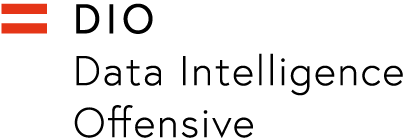Österreich Werbung, DIO, Standortagentur Tirol, Tirol Werbung and MODUL University of Vienna sign Memorandum of Understanding on Tourism Data Space
In the context of the Austrian Tourism Day (ÖTT) held on May 2, 2023, Österreich Werbung (ÖW), Data Intelligence Offensive (DIO), Standortagentur Tirol, Tirol Werbung and MODUL University Vienna signed a Memorandum of Understanding to define the cooperation in the field of data for Austrian tourism. The Federal Ministry of Labor and Economy, the Federal Ministry for Climate Protection, Environment, Energy, Mobility, Innovation and Technology (BMK), the Federal Ministry of Finance (BMF) and the Austrian Federal Economic Chamber (WKO) support the initiative.
With the Memorandum of Understanding (MoU), the signatory organizations aim to establish, develop and maximize the impact of a data space, the Tourism Data Space, for tourism in Austria and for European connectivity. The Memorandum sets out the collaboration between the subscribing partner organizations and supporters and ushers in a new era towards data-driven tourism. It is a declaration of the partners to further develop tourism digitally and data-based together.
The Tourism Data Space ensures secure cross-organizational and cross-sector data use for Austrian tourism and a connection to the European level, such as in the energy and mobility sectors. In addition, linkages of relevant data along the entire value chain are to be enabled. The goal is to support the sovereign and trustworthy exchange of data between various stakeholders and to promote a thriving data economy in Europe.
Tourism Data Space expands the scale of data use
“Mankind generates, measures and manages billions of new data every day: Environmental data, movement data, social media data. However, companies quickly reach their limits when it comes to using and sharing data. With Tourism Data Space, we don’t stop at economic or country-specific borders with our data. In the process, the digital transformation is changing all worlds of life – at DIO, we strive to make the best possible use of it. Big data analytics, AI or simulation accompany us every day and thanks to networking in the community and through data economics, we can now understand and process topics even better and use them for all of us,” says Günther Tschabuschnig, President of the Data Intelligence Offensive (DIO).
Concrete applications as best practices for the industry
In the area of the application of tourism-relevant data, some destinations and state tourism organizations are already taking the first important steps together with a wide variety of partners. They are using specific use cases to demonstrate the huge potential of data application for the industry.
The first use case in the Tourism Data Space is in the area of mobility. In this case, a new data service was created in the Tourism Data Space by integrating different partners and heterogeneous data sources. By analyzing and visualizing data, information about characteristics and behavior of guest profiles at tourist hotspots is provided for tourism organizations. Pilot regions of the Mobility Use Case are the tourism regions Mayrhofen-Hippach in Zillertal, Schladming-Dachstein, Zell am See-Kaprun, Wolfgangsee and the Ötscher-Tormäuer Nature Park.
The results can then be used by the user organizations to suggest other experiences to guests, for example, in order to avoid a spatially and temporally excessive concentration of tourist frequency at some hotspots. This aspect should enable a compatible increase in value for a region. Based on the analyses in Mayrhofen, for example, it was possible to optimize the timetables or the frequency of the bus line in the direction of the popular excursion destination Schlegeis reservoir.
In the coming weeks and months, the various use cases, such as in the area of optimized use of district heating and in the area of the use of artificial intelligence (“AI concierge”), will be brought before the curtain step by step at numerous events. The aim is for partners in Austrian tourism to benefit from the findings and best practices in the best possible way.

f.l.t.r: Univ.-Prof. Dr. Marion Garaus, Vize-Rektorin MODUL University Vienna; Mag. Susanne Kraus-Winkler, MRICS, Staatssekretärin im BMAW; MMag. Ingo Erricher, Prokurist Standortagentur Tirol; Mag. Astrid Steharnig-Staudinger, Geschäftsführerin Österreich Werbung; Lisbeth Mosnik, Deputy Head Of Department Key Enabling Technologies for Industrial Innovation; Karin Seiler, Geschäftsführerin Tirol Werbung; Dipl.-Ing. Mag. Günther Tschabuschnig, Präsident DIO © Jürg Christandl




